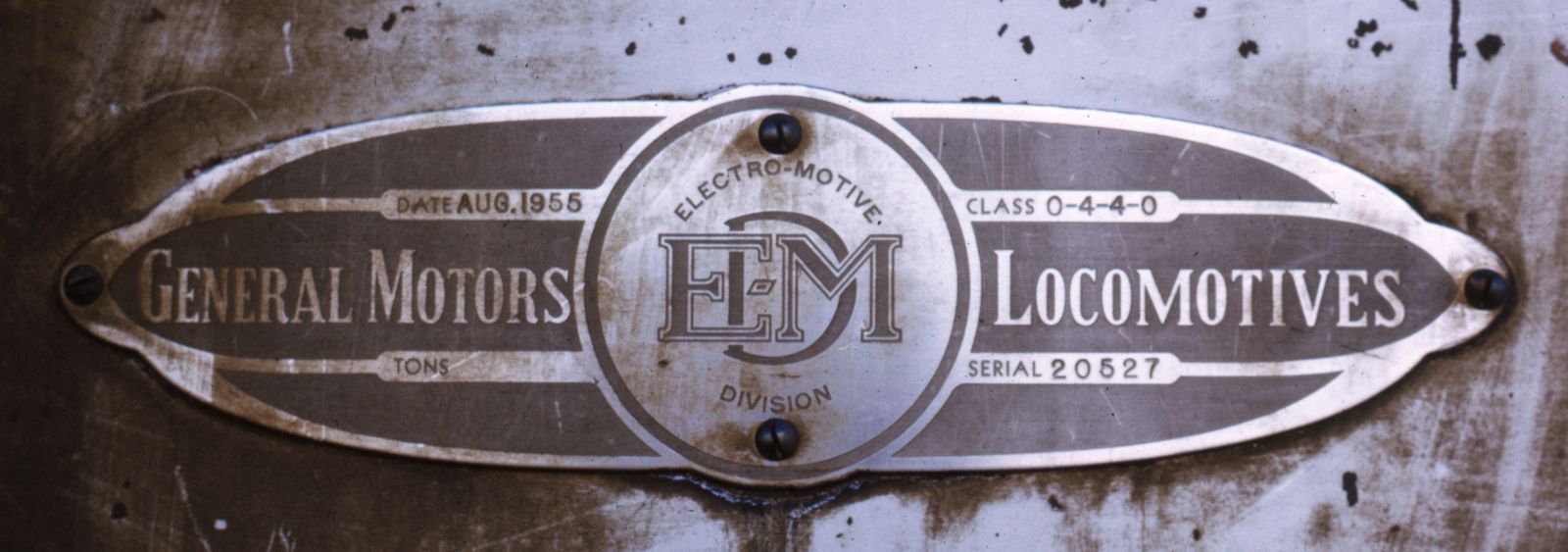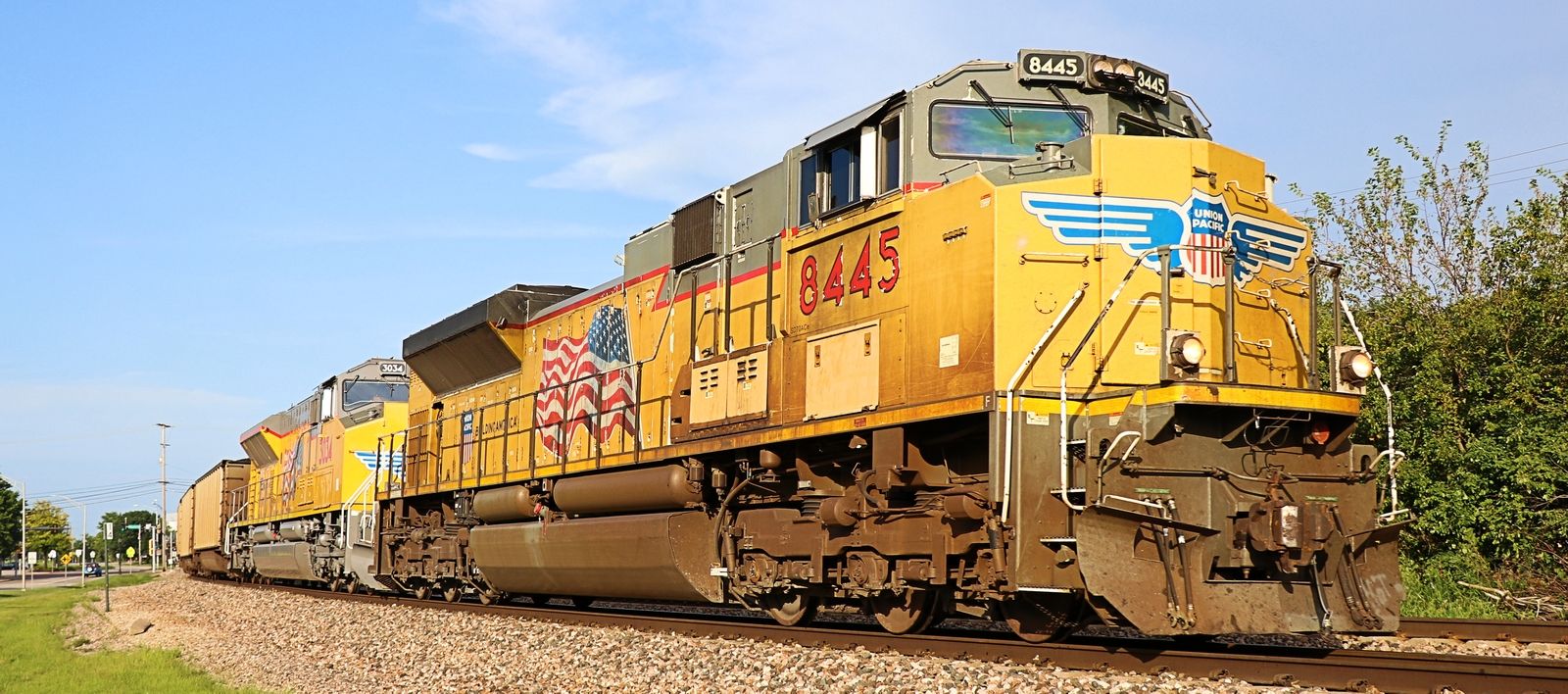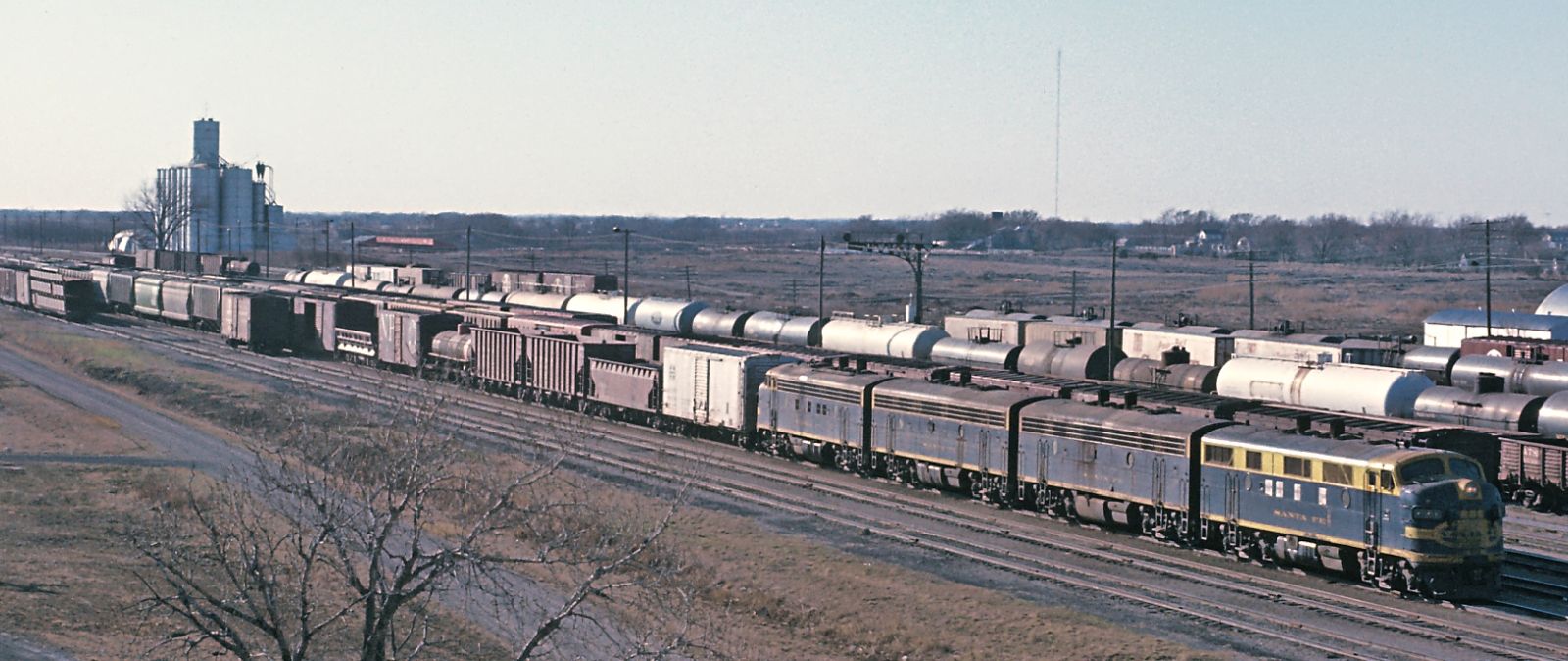Electro-Motive Diesel was a General Motors subsidiary for most of its existence, going back to the Electro-Motive Company, founded in 1922. The Electro-Motive Company began building and upgrading gasoline-powered railcars with electric transmission using engines from the Winton Engine Company. Since EMC thus became the main buyer of Winton engines, the mutual dependence of the two companies grew. Meanwhile, General Motors saw the potential of the diesel engine and was looking for partners to implement its two-stroke diesel ideas. Thus, in 1930, EMC and Winton were bought at the same time and rail vehicles with this engine were developed to series maturity.
The advantage of the two-stroke diesels was that they had one combustion stroke for each revolution of the crankshaft and therefore theoretically did twice the work per revolution compared to four-stroke engines. This led to a low power-to-weight ratio, which also benefited the Junkers two-stroke diesels used as aircraft engines in the 1930s. Since two-stroke diesels did not require inlet valves and only a Roots blower was required to scavenge the combustion gases, the number of individual parts was also reduced, which reduced manufacturing costs and simplified maintenance. In contrast, the poorer exhaust gas behavior was only relevant towards the end of the twentieth century.
It started with streamlined multiple units, the first of which was the 1933 M-10000 “City of Salina”. In the second half of the 1930s, switching locomotives and soon mainline locomotives with Winton engines followed, all of which had electric power transmission. In 1941, the company was renamed the Electro-Motive Division (EMD), becoming a wholly owned subsidiary of GM and losing the freedoms it had had until then. As early as 1938, the Cleveland Diesel Engine Division was founded to build larger two-stroke marine diesels and the Detroit Diesel Corporation to build smaller two-stroke diesels for road vehicles.

Builder's badge on a D&RGW F9
John W. Stephens III 
After the TA mainline locomotive, only six of which were built, the great success of the EMD locomotives with the E and F series began in 1937 and 1939, respectively. The name of the E series passenger locomotives came from “Eighteen hundred”, since initially two Winton engines with a total of 1,800 hp were used. The F series was intended for freight trains and got its name from “Fourteen hundred” because the built-in engine initially provided 1,350 hp. Like the TA, both locomotive families had a self-supporting, streamlined carbody structure. The 567 series engines replaced the Winton 201A and were groundbreaking in their modular design, offering engines with six to 16 cylinders and in different power levels with a large number of interchangeable parts. According to their name, the engines had a displacement of 567 cubic inches (9.29 liters) per cylinder. They formed the basis for the engines of the 645 and 710 series, which were used in almost all EMD locomotives until 2014 and are still manufactured today on request for countries in which no strict exhaust gas regulations apply.
The era of the road switcher only began at EMD in 1949, when ALCO had already been offering the RS-1 for eight years. With the four-axle GP7, the six-axle SD7 and their successors, however, it was possible to make it to the top of the world within a short time. While other manufacturers were already offering engines with exhaust gas turbochargers in the 1940s, this complex technology was initially dispensed with. Thanks to the light two-stroke engines with Roots supercharger, they could initially keep up with the competition in terms of power and didn't have to struggle with the sluggish response behavior of the turbochargers of the time. It was not until 1958 that they gave in and developed the “mechanically-assisted turbocharger”, which is being connected to the crankshaft via a clutch at low engine speeds or rapid load changes and then acts like a supercharger.
In the following decades, EMD was the world market leader with the Road Switchers with the prime movers of the 567, 645 and 710 series. Since General Electric had appeared as a direct competitor in 1956, the market in North America had been divided up among themselves. It wasn't until the 1980s that GE took the lead, only just ahead of EMD. Since the 1990s, only the six-axle models of the SD series have been offered because the four-axle GP models were no longer popular with customers. Internationally, EMD locomotives were particularly popular in second and third world countries without their own production facilities, but industrialized countries also imported EMD locomotives. Other foreighn designs were also manufactured with EMD power trains, such as the 125 mph British Class 67 and the Stadler Euro, which were or are manufactured in Spain by MACOSA or its successor companies Meinfesa, Vossloh España and Stadler.

SD70ACe, the most successful variant of the SD70 series, which has sold almost 6,000 units since 1992
Tyler Silvest 
The first attempt to move away from the two-stroke came in the late 1990s with the 265 series prime mover, which had 1,010 cubic inches per cylinder and as a V16 produced up to 6,300 hp. Reliability issues kept the engine from winning customer favor and the 710 series continued to be ordered. The EPA Tier 4 emission standard, which came into effect in the USA in 2015, ended the career of the 710 abruptly. In Central Europe, too, no new examples of the class 66, which was so popular with private railways, could be introduced around the same time because similar emission standards came into effect. This led to the 265 series four-stroke being brought up to date and today dubbed the 1010 series it is fitted to all EMD locos delivered in the USA. This engine has three turbochargers and state-of-the-art electronic fuel injection to comply with current emission regulations, while the 710 series two-stroke continues to be produced as an option for export.
EMD had already been sold to investors in 2005 due to GM's financial problems and was renamed Electro-Motive Diesel. In the following years the workforce increased and in 2010 EMD was sold again to Progress Rail, a subsidiary of Caterpillar. Appropriately, the company has been trading as Progress Rail Locomotive since 2016 and is still in second place worldwide behind the diesel locomotives from GE Transportation, which is now a subsidiary of Wabtec.
In 1935, EMC built a total of five machines to test the use of large mainline diesel locomotives under everyday conditions. These were two company demonstrators, one for the Baltimore & Ohio and a double set for the Santa Fé. Since there was no production capacity for large diesel locomotives at that time, they turned to General Electric and the St. Louis Car Company.
The basic idea was to install two diesel engines, each with its own generator and about 50 percent more total power, instead of just one diesel engine. Since the engines were less heavily loaded on average, less wear and tear and a longer service life could be expected. If one engine or generator failed, the locomotive could continue to run with the other. The concept of having a driver's cab at each end was new, but was not pursued on later American diesels.
For cost reasons, the two demonstrators had got simple, box-shaped bodies like earlier boxcabs. For the first time, they were given multiple controls, so that both locomotives could be controlled by one driver at the same time. In fact, they were often used together to achieve the same performance as a large steam engine. After extensive testing, they were scrapped in 1938.
The Baltimore & Ohio received a locomotive identical to the first two and was numbered 50. It soon got a slanted fairing on one end, also known as a “Shovel Nose”. This cladding was removed again during World War II. In this form, the locomotive was still used for local freight and passenger trains for a while after the end of the war. It later ended up in the National Museum of Transportation in St. Louis, Missouri and can still be found there today.
The double locomotive of the Santa Fé was managed as one complete unit and received the number 1. It had streamlined shapes, covered bogies and an attractive color scheme. The company's route network had long stretches that led through deserts and mountains and offered good conditions for testing the new technology. Their advantage over steam locomotives was that they were not dependent on water supplies and could cover long distances with one tank of diesel.
The 2,226.6-mile route, which was regularly run with passenger trains, served as preparation for the later operation of the streamlined trains and revealed a few teething problems. The fairing on the bogies soon had to be removed due to repeated overheating problems. The hood over the air intakes above the driver's cabs also impeded cooling, so that additional air intakes on the roof were necessary. The unit was later reinforced with one of the EMC demonstrators. In 1938, one driver's cab was removed and a “Bulldog Nose” formed, as was also found on the later production locomotives. In addition, both bogies each received a leading axle. The locos were returned to EMD in 1953 and converted to booster units.
The locomotives provided many insights which were implemented in the series production of the E series. These were powered by the same Winton engines, initially each with 900 hp, but bogies with a central carrying axle. The multiple control was soon adopted by all manufacturers and is still used today in almost all North American diesel locomotives in a form that has hardly changed.
| General |
| Built | 1935 |
| Manufacturer | Electro-Motive Corporation |
| Axle config | B-B |
| Gauge | 4 ft 8 1/2 in (Standard gauge) |
| Power |
| Power source | diesel-electric |
| Engine | Winton 201-A |
| Engine type | 2x V12 diesel |
| Engine output | 1,800 hp (1,342 kW) |
In 1935 EMC manufactured a total of three prototypes of a heavy switcher, which were equipped with the Winton engine, of which the E-series had two. Two of these switchers had a 600 hp in-line 8-cylinder engine, while the third had a 900 hp V12. All had the same frame length, but with the more powerful version, the body was longer. A special feature of the hoods over the machinery was that the ceiling tapered to the driver's cab to improve visibility.
The production locomotives received an S for “six hundred” in the version with 600 hp, while the version with 900 hp received an N for “nine hundred”. There were also two different types of frames, which can be distinguished by the second letter in the type designation. The first version was cast by General Steel Castings and therefore has a C for “cast”, while the other was welded by EMC themselves and therefore has a W for “welded”.
The SC, SW, NC and NW types initially resulted from the combinations of engine and frame. Other versions of the more powerful variant were built, which differed mainly in terms of the electrics and were designated NC1, NC2, NW1 and NW1A. Two more copies were made from the NW4, which were lengthened and had an additional steam generator. These were used by the Missouri Pacific for switching passenger cars. A total of 175 series locomotives were produced up to 1939.
A single one was only given the type designation T and basically consisted of two power trains from the N series, which stood on four two-axle bogies with a driver's cab in the middle. With an output of 1,800 hp, it was intended to transfer freight trains between nearby marshalling yards and was not built in series because the long frame settled over time.
| Variant | SC, SW | NC, NC1, NC2, NW, NW1, NW1A, Model 90 | NW4 | T |
|---|
| General |
| Built | 1936-1939 | 1935-1938 | 1938 | 1936 |
| Manufacturer | Electro-Motive Division |
| Axle config | B-B | B-B-B-B |
| Gauge | 4 ft 8 1/2 in (Standard gauge) |
| Dimensions and Weights |
| Length | 44 ft 5 in | 67 ft 2 in |
| Wheelbase | 28 ft | 47 ft |
| Rigid wheelbase | 8 ft | 7 ft 6 in |
| Service weight | 180,000 lbs | 198,000 lbs | 208,000 lbs | 324,000 lbs |
| Adhesive weight | 180,000 lbs | 198,000 lbs | 208,000 lbs | 324,000 lbs |
| Axle load | 45,000 lbs | 49,500 lbs | 52,000 lbs | 40,500 lbs |
| Power |
| Power source | diesel-electric |
| Top speed | 50 mph |
| Starting effort | 50,000 lbf | 60,000 lbf | 70,000 lbf | 71,500 lbf |
| Engine | Winton 201-A |
| Engine type | 8-cyl. diesel | V12 diesel | 2x V12 diesel |
| Fuel | | 600 us gal (diesel) | | 1,200 us gal (diesel) |
| Engine output | 600 hp (447 kW) | 900 hp (671 kW) | 1,800 hp (1,342 kW) |
| Calculated Values |
| Factor of adhesion | 1 : 3.60 | 1 : 3.30 | 1 : 2.97 | 1 : 4.53 |
| Power-to-weight ratio | 0.0033 hp/lb | 0.0045 hp/lb | 0.0043 hp/lb | 0.0056 hp/lb |
| Adhesive weight/Total | 1 : 1.00 |

A four-part F3 in 1972 in a Santa Fe freight yard
Roger Puta